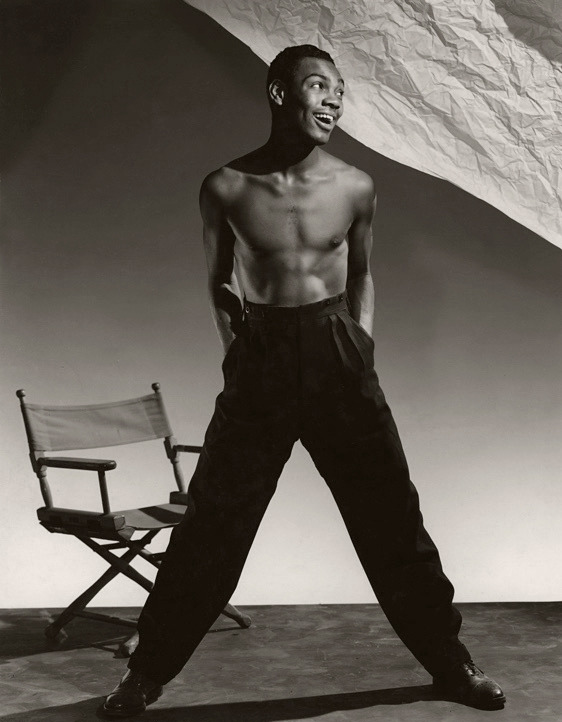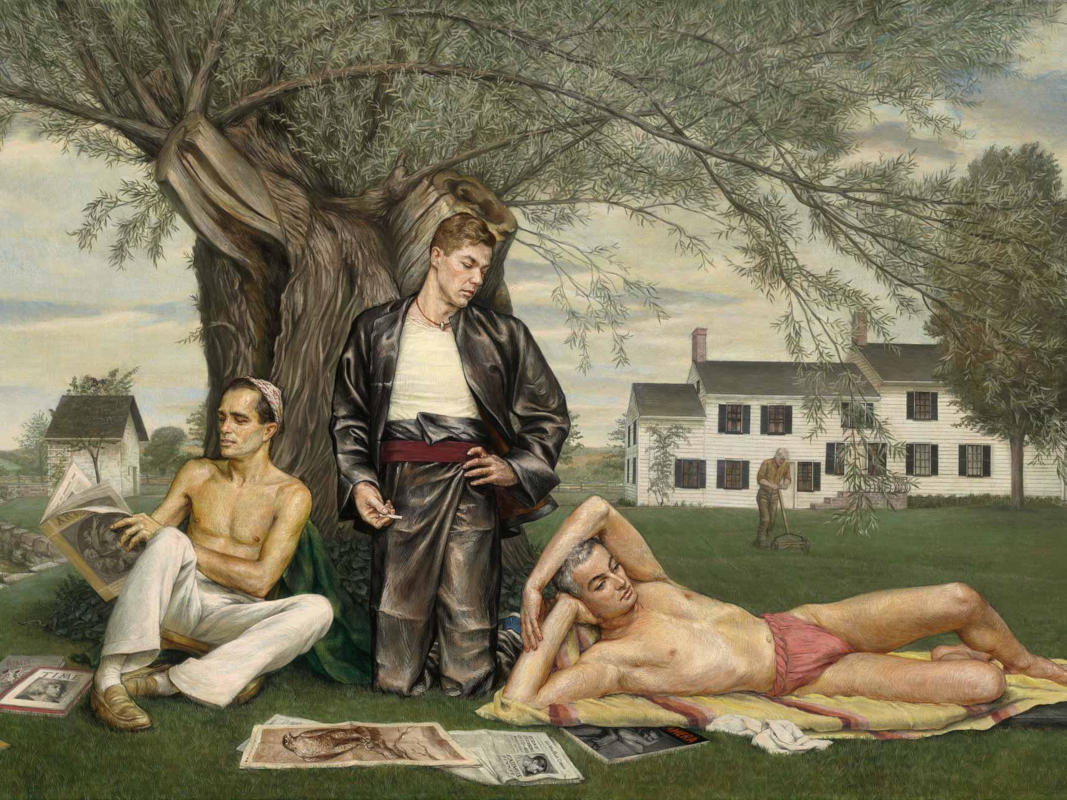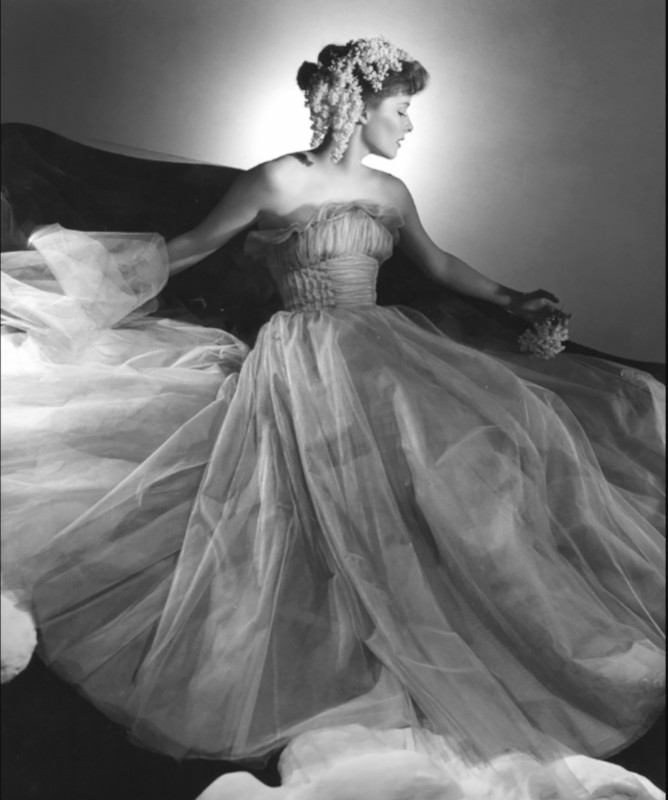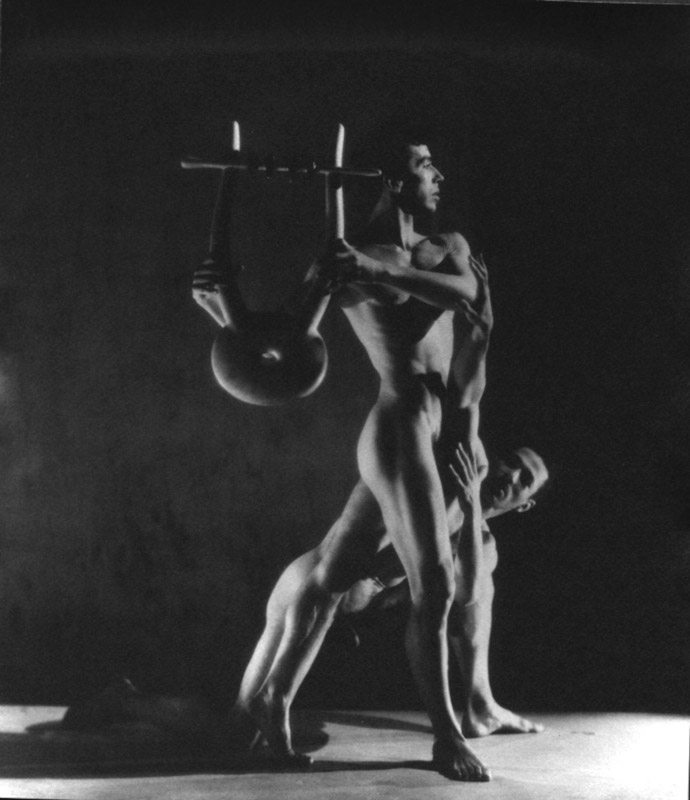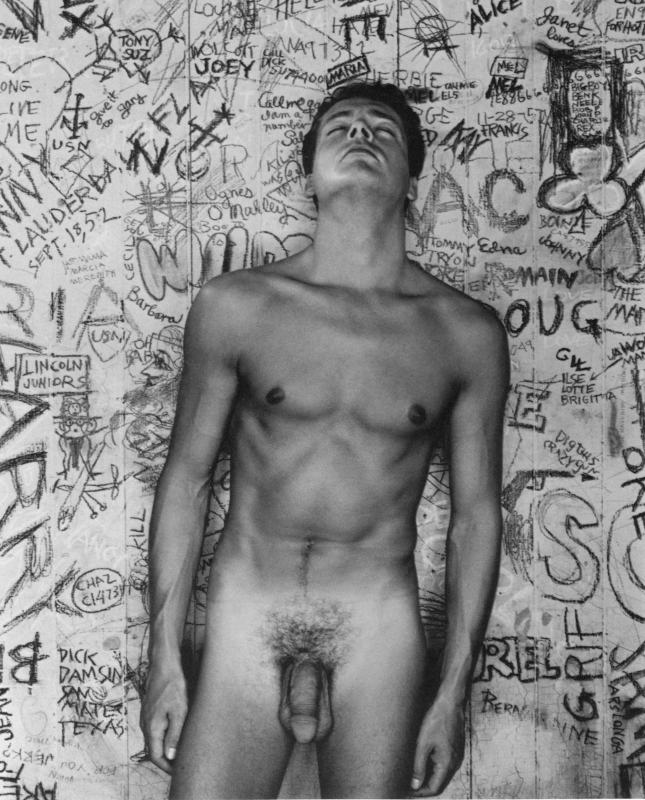
George Platt Lynes at the Pierre Matisse Gallery
located in the Fuller Building
overview
George Platt Lynes was one of the great American photographers of the 20th century.
His public career focused on elegant fashion shoots and portraits of celebrities, including those displayed at a 1941 exhibition at the Pierre Matisse Gallery, while his private passion was photographing nude men, creating an outstanding and influential photographic archive that was only shared with his intimate friends.
History
George Platt Lynes (1907-55) was born in East Orange, New Jersey, and grew up in western Massachusetts. In 1925, at the age of 18, Lynes’ parents sent him to Paris to live with relatives. He accompanied his cousin to Gertrude Stein’s salon and Stein became both a friend and an important influence on his career. In 1927, while on another visit to France, Lynes met the expatriate couple, novelist Glenway Wescott and publisher Monroe Wheeler (who was later a Museum of Modern Art administrator). Lynes pursued a willing Wheeler, establishing a menage-a-trois that lasted for sixteen years, until Lynes moved out of their shared apartment in 1943. The relationship between the men is evoked in Paul Cadmus’ painting Stone Blossom: A Conversation Piece (1939-40), which shows the three partners in front of their New Jersey country house.
While in France, Lynes began taking amateur photographs of Stein and his other friends. In 1929, he turned to photography as a serious artistic endeavor. In the early 1930s, Lynes settled in New York and in 1932 established a studio. He occupied a succession of studios and apartments in New York, primarily on the Upper East Side (demolished). Lynes became part of a social set of creative gay artists and writers in New York that included Wheeler and Wescott, Lincoln Kirstein, Paul Cadmus, Jared French, George Tooker, Bernard Perlin, Jensen Yow, and Pavel Tchelitchew, all of whom he photographed.
Lynes was soon enormously successful as a photographer of fashion, celebrities, and ballet dancers with photographs included in Museum of Modern Art and Wadsworth Atheneum exhibitions and displayed at the Julien Levy Gallery and other prominent galleries. He photographed leading models in his studio and supplied images to Henri Bendel, Saks Fifth Avenue, Bergdorf Goodman, and other upscale stores, and also supplied images to Vogue, Harper’s Bazaar, and Town and Country magazines.
Lynes became the premier photographer of society and cultural figures who lived in or visited New York. In 1941, the Pierre Matisse Gallery, housed in one of the spaces on the lower floors of the Fuller Building, specifically designed for art galleries, hosted an exhibition entitled “Two Hundred Portraits by George Platt Lynes Plus an Assortment of Less Formal Pictures of People.” The Pierre Matisse Gallery, founded by the son of artist Henri Matisse, was among the most important art galleries in New York from 1931 to 1989. For this exhibition, Wheeler organized a catalogue that included a list of all of the images and a short essay by Wescott. Among the LGBT luminaries whose portraits were included in the show were W. H. Auden, Paul Cadmus, Jean Cocteau, Colette, Aaron Copland, André Gide, Katharine Hepburn, Christopher Isherwood, W. Somerset Maugham, Gertrude Stein, Pavel Tchelitchew, Virgil Thomson, and Monroe Wheeler. Lynes’ biographer Allen Ellenzweig comments that,
In the end the exhibition was an extensive anthology of faces that offered a rich retrospective of George Platt Lynes as a master portraitist.
Although not in this exhibition, Lynes also took important photographs of other LGBT figures, including Frederick Ashton, Jimmie Daniels, E M. Forster, Marsden Hartley, William Inge, Thomas Mann, and Tennessee Williams.
Through his friendship with Kirstein, the leading figure behind the establishment of New York City Ballet, Lynes photographed ballets and ballet dancers for that company and its predecessor, American Ballet. Lynes had the ability to stage still images that evoked the movement of ballet. Among his greatest works are images that show dancers, male and female, clothed and naked, flanking George Balanchine, and a series of images of the naked City Ballet dancers Nicholas Magallanes and Francisco Moncion in scenes from Balanchine’s Orpheus.
Lynes’ passion from c. 1932 until his death was photographing nude men, mostly in his studio. These often highly sexualized and overtly homoerotic images could not be shown in public in the United States due to obscenity laws. A few of these images were published in the 1950s under pseudonyms, in the Swiss gay magazine Der Kreis.
The nudes were George’s personal passion, and they were never intended to be sold, only shared with friends.
The nude photos exemplify the notable qualities of Lynes’ photographs. Many show figures creatively interacting with studio props. Others show bodies in imaginary Surrealistic arrangements. Most prominently, they exemplify Lynes’ mastery of bright light and shadow for dramatic effect. The models include lovers and friends of Lynes, as well as soldiers, sailors, performers, and others whom he found attractive. He also took especially intimate images of Wheeler, including a magnificent portrait of his head and Wheeler seemingly asleep, and sculptural photos of Wheeler’s erect penis. The nude photographs only survive in significant number because, towards the end of his life, Lynes sent prints and negatives to the Kinsey Institute (originally the Institute for Sex Research). As these images became publicly available, beginning in the 1970s, they influenced photographers such as Robert Mapplethorpe, Duane Michaels, Herb Ritts, and Bruce Weber. They are his most long-lasting contribution to both photography and to gay representation.
Lynes’s work on the male nude is sui generis, a project so unalterably his own, with so little promise of any serious recompense, that it is significant he pursued it with such passion….He was a passionate lover of beautiful young men….It was as if he willed a private Utopia into being. Twentieth-century photography is the richer for it; we are his beneficiaries.
Entry by Andrew S. Dolkart, project director (November 2021).
NOTE: Names above in bold indicate LGBT people.
Building Information
- Architect or Builder: Walker & Gillette
- Year Built: 1928-29
Sources
Allen Ellenzweig, George Platt Lynes: The Daring Eye (New York: Oxford University Press, 2021).
Allen Ellenzweig, The Homoerotic Photograph: Male Images from Durieu/Delacroix to Mapplethorpe (New York: Columbia University Press, 1992).
David Leddick, George Platt Lynes 1907-1955 (Cologne: Taschen, 2000).
David Leddick, Intimate Companions: A Triography of George Platt Lynes, Paul Cadmus, Lincoln Kirstein, and Their Circle (New York: St. Martin’s Press, 2000).
Donald Albrecht, Gay Gotham: Art and Underground Culture in New York (New York: Museum of the City of New York and Skira/Rizzoli, 2016).
James Polchin, “The Afterlife of George Platt Lynes,” Gay & Lesbian Review (May-June 2006), 16-17.
Jarrett Earnest, The Young and Evil: Queer Modernism in New York, 1930-1955 (New York: Davcid Zirmer Books, 2019).
George Platt Lynes: Photographs from The Kinsey Institute, introduction by Bruce Weber, preface by June Machover Reinisch, essays by James Crump (Boston: Bulfinch Press, Little, Brown and Co., 1993).
Steven Haas, ed., George Platt Lynes: The Male Nudes (New York: Rizzoli, 2011) with an afterword by Allen Ellenzweig.
Do you have more information about this site?
This project is enriched by your participation! Do you have your own images of this site? Or a story to share? Would you like to suggest a different historic site?







